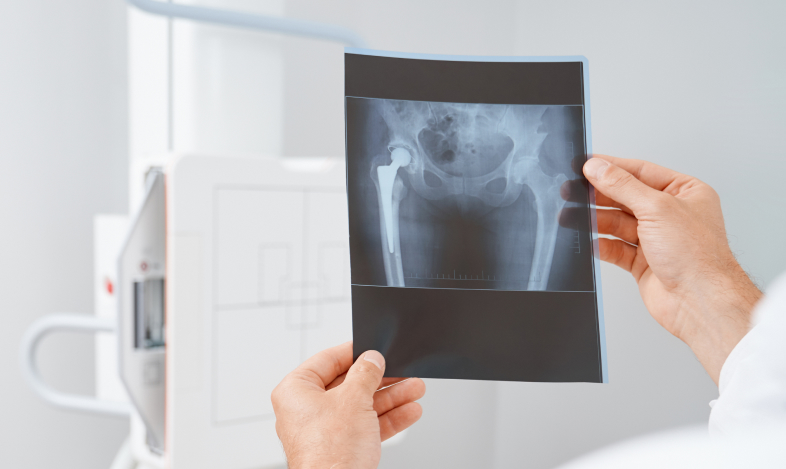How “burning” nerves can help to soothe pain: Radiofrequency

How does radiofrequency work?
Radiofrequency is the application of an electric current for therapeutic purposes. It is used in many areas of health care, but its use in the treatment of pain is generally aimed at producing effects on the nerves. When there is an injury, information is transmitted from the injured area to the spinal cord and from there to the brain. Radiofrequency makes it possible to treat this transmission of information in different ways.

1. Conventional radiofrequency or thermal radiofrequency:
In this form of radiofrequency the specialist doctor introduces a special needle that allows transmitting electricity through it and generates an ABLATIVE treatment in the desired area. This treatment allows to “burn” the small nerve ending responsible for transmitting pain from the injured area to the central nervous system and thus desensitize the area. Its use is usually applied exclusively to sensitive nerves. Thus with it we can treat different types of pain among which are:
- Lumbar pain due to facet syndrome
- Pain in the lumbo sacral region due to sacroiliac joint involvement.
- Cervical region pain due to facet syndrome
- Knee pain due to osteoarthritis of the joint
- Post-surgical knee pain
- Hip pain due to osteoarthritis
- Post-surgical hip pain
- Shoulder pain due to osteoarthritis
- Adhesive shoulder capsulitis
- Facial pain due to facial neuralgia (trigeminal neuralgia)
- Complex regional pain syndrome (Sudeck’s syndrome)
- Patient with pancreatic cancer and oncologic pain.
- Cancer pain
2. Pulsed Radiofrequency (RFP):
It is a form of radiofrequency in which the treatment applied has the purpose of modulating the transmission of the painful impulse, NOT ITS INTERRUPTION as in thermal radiofrequency. In this variant thanks to the application of a voltage applied discontinuously (in pulses) the temperature around the needle is always maintained below the limits of ablation (42 degrees) but in a range of temperature and characteristics that allows modulating the transmission of the impulse from the region of the nervous system in which the treatment is applied.
This variant of treatment is applied on injured structures of the nervous system or structures that have a motor component that should not be treated with thermal radiofrequency (as they would lose this motor function). Thanks to these characteristics this treatment will allow us to treat:
- Radicular pain / Sciatica
- Shoulder pain due to tendinitis
- Meralgia paresthetica pain
- Post-surgical pain after inguinal hernia and lung surgery
- Postherpetic neuralgia
- Facial neuralgias (post-surgical neuralgias )
- Patients operated on for laryngeal cancer or treated with radiotherapy and who have pain in the cervical region.
- Peripheral neuralgia.
3. Cooled radiofrequency
Like conventional radiofrequency, it is an ablative treatment that seeks to interrupt the transmission of the nerve impulse.
Thanks to different characteristics, this treatment produces a heating with a subsequent cooling so that the size of the lesion produced is larger and thus the effectiveness is potentially greater. Its use is limited to specific cases in which the anatomy of the area is very complex and the possibilities of locating the sensory branch that picks up the sensitivity are difficult.
- Hip pain due to osteoarthritis
- Knee pain due to osteoarthritis
- Shoulder pain
- Pain in the lumbo sacral region due to sacro iliac involvement.
How is radiofrequency performed?
It is an outpatient procedure, that is to say, it generally does not require hospitalization (although it will depend on the specific condition of each patient). The success of this treatment requires the patient’s cooperation. This is why general anesthesia is not used, but rather varying degrees of conscious sedation.
When will I start noticing relief?
This treatment in addition to radiofrequency uses local anesthetics and corticosteroids whose action is instantaneous. However, the total effect will be noticed 3-5 weeks after the treatment. If the effect is sufficiently effective, it will last over 6 months and can be prolonged if associated to this treatment with functional recovery guidelines. It is a very safe treatment, especially if it is performed by suitable professionals and under the appropriate standards and facilities. Complications are extremely infrequent and usually have to do with an increase in local burning pain which is transient and usually responds to the use of analgesics.
Concluding… Why can a burn relieve my pain?
Because it is applied with a very strict control and on very specific structures, in this case small sensitive nerve branches that collect the sensitivity of an area that causes pain. Applied with specific protocols allow great and very lasting results for many types of pain, if this is your case do not hesitate to consult your pain doctor about whether you could benefit from this type of treatment.
Jorge Orduña, M.D.
Medical Director MIVI Salud and Director MIVI Salud Valencia